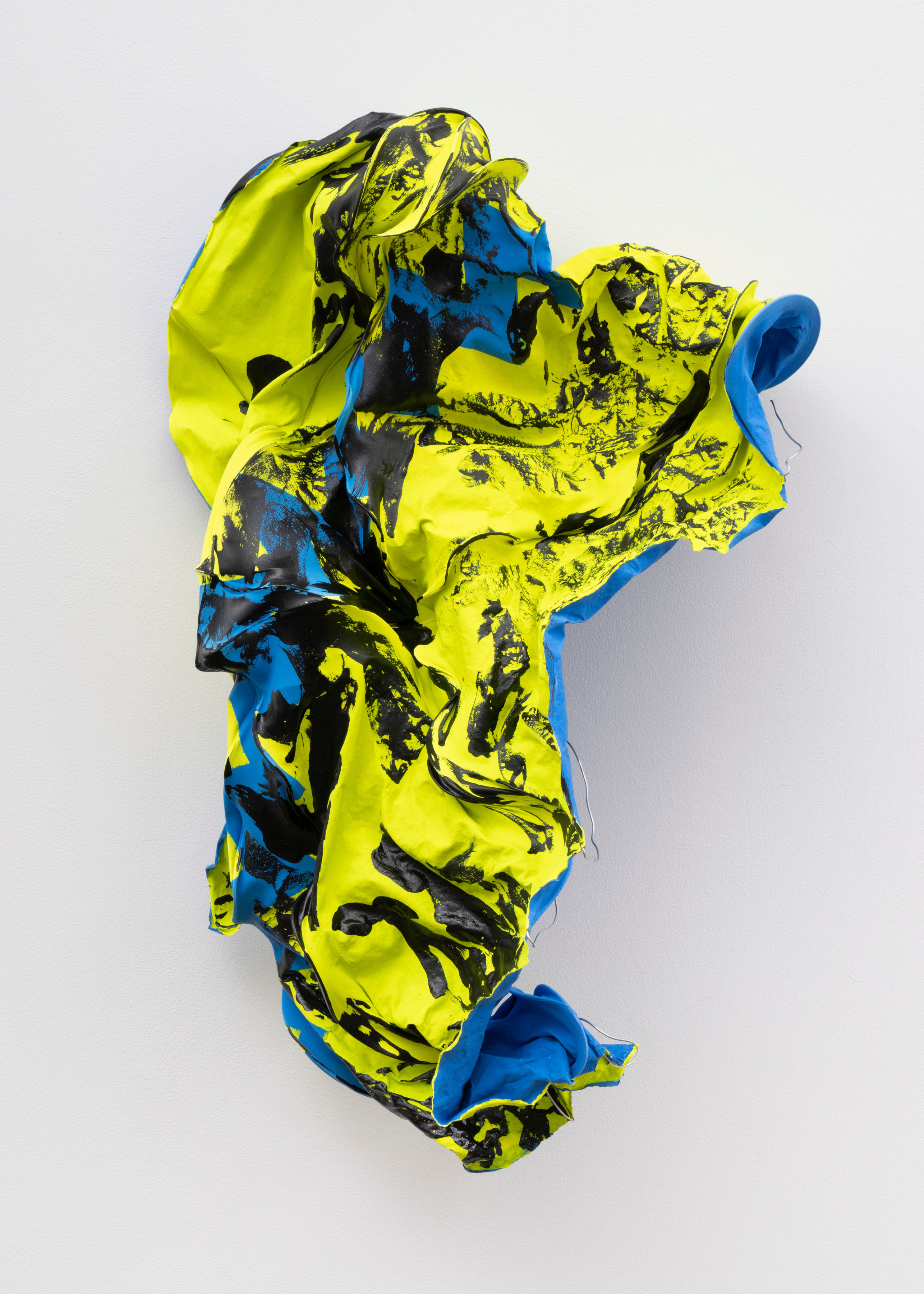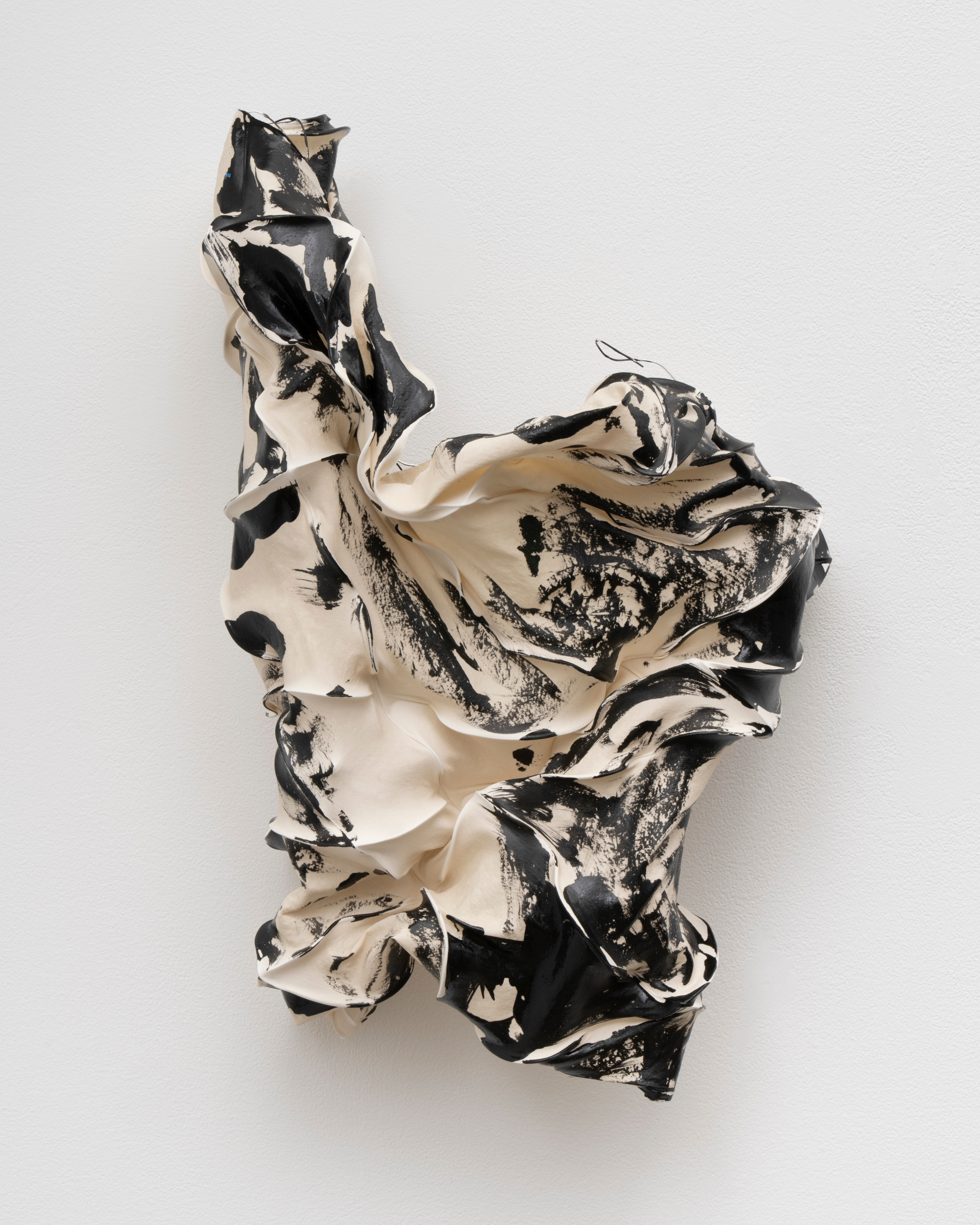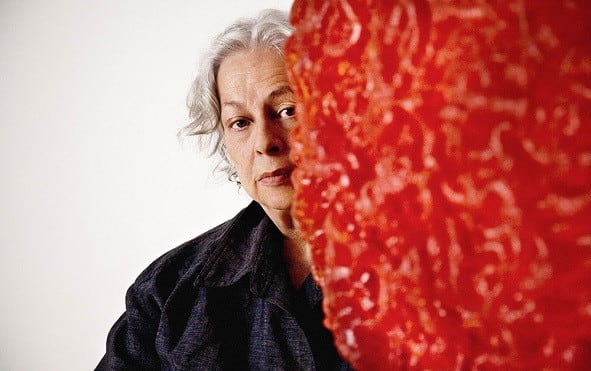Public Opening Friday, November 3, 2023 6-8 PM

Lynda Benglis, Clouded Border, 2023 © 2023 Lynda Benglis / Licensed by VAGA at Artists Rights Society (ARS), NY
New York, NY – 125 Newbury is honored to present Lynda Benglis: Skeletonizer, an exhibition of new sculptural works by Lynda Benglis, which will be on view at the gallery’s 395 Broadway location in Tribeca from November 4th through January 13th, 2024. An opening reception will be held on Friday, November 3rd, from 6-8 pm. The works on view at 125 Newbury, which are all made from abaca paper, were realized in collaboration with Dieu Donné in New York City, with whom Benglis first began working more than twenty years ago.
Made from abaca paper, bamboo reeds, and wire, Benglis’s new series of sculptures convey a sense of mass and solidity that belies their weightlessness. Abaca, which comes from a type of banana tree native to the Philippines, is well known for the strength and durability of its fibers. It is used in a range of different applications, from textiles to banknotes. For Benglis, the experience of working with the “mush” of wet paper pulp and transforming it into a solid represents a kind of alchemy, extending a lifelong fascination with softness and malleability that goes back to her childhood in Louisiana. “I think of crush and mush,” Benglis says of these new works, “I think of skin. I think of pulling—the plasticity. I think of this spontaneity in absorption. I think of the possibility of color and not color. I think of history. In fact, we wouldn’t have history, really, in a certain way, without it. That history couldn’t survive without paper. It’s beyond context.”

Lynda Benglis, Licorice Piercer, 2023 © 2023 Lynda Benglis / Licensed by VAGA at Artists Rights Society (ARS), NY
Though entirely abstract, the sculptures in Benglis’s exhibition at 125 Newbury are evocative of forms from nature. Titled after various species of moths—a “skeletonizer” is a type of moth—they gesture to the sense of vivacity, kineticism, and lightness communicated by their endlessly varying forms. At the same time, Benglis’s sculptures are defined by the rigidity of their internal structure, which pushes through the supple skin of the abaca to define a complex manifold of roiling contours, not unlike the exoskeleton of an insect. Benglis has explained that for her, the works register a constant negotiation between chaos and order, between stasis and movement: “I think of myself as making architecture out of material motion,” she explains.
A pioneering figure in post-1960s art, Benglis has exerted a profound effect on contemporary understandings of what constitutes sculpture. She has been working at the forefront of material experimentation for more than five decades, and paper has long been central to her practice. The works in the exhibition begin with pulp, which is made into sheets of handmade paper. A skeletal structure of bamboo reeds or aluminum wire is then sandwiched between two sheets of paper, pressed and allowed to dry, in some cases, exposed to the sun, the air, and the elements. As the paper dries, it loses nearly half of its volume and, in a natural process of shrinkage, curls and twists its internal skeleton. The resulting forms convey a powerful sense of organicism and corporeality, registering the artist’s masterful negotiation of the physical properties of her materials. “I realized that the idea of directing matter logically was absurd,” Benglis remarked in a 1970 statement, “Matter can and will take its own form.”
This body of work continues the artist’s long history of working in paper, a medium she first began exploring with Lynn Forgach at Exeter Press in New York City in 1978. She then went on to create further series of works using handmade paper in New York and at the Gandhi Ashram in India into the early 1980s. It was during her first collaborations with Dieu Donné between 1999 and 2001 that she initially developed the technique of draping wet abaca paper around a springy wire skeleton to achieve sculptural form. Benglis would return to this idea in the early 2010s, introducing chicken wire as a support for her paper sculptures. This resulted in a richly varied group of works which she continued to develop until 2020. The works in her exhibition at 125 Newbury are a summation of a lifetime of experimentation and a profound testament both to Benglis’s mastery of materials and her collaborative spirit.

© 2023 Lynda Benglis / Licensed by VAGA at Artists Rights Society (ARS), NY
Lynda Benglis
Since the 1960s, Lynda Benglis (b. 1941, Lake Charles, Louisiana) has been celebrated for the free, ecstatic forms she has made that are simultaneously playful and visceral, organic and abstract. Benglis began her career in the midst of Postminimal art and has pushed the traditions of painting and sculpture into new territories throughout her career. Comprised of a variety of materials—from beeswax, latex, and polyurethane foam to later innovations with plaster, gold, vaporized metals, glass, ceramics, and paper—her works demonstrate an enduring fascination with process. The embrace of flowing forms, color, and sensual surfaces attests to her inventive and radical spirit. Benglis’s experimental videos expand her interest of process to new media, featuring performative actions and using technological mediation to explore themes of physical presence, narcissism, sexuality, and gendered identity. Through her multifarious practice, Benglis continues a long-running investigation of the proprioceptive, sensory experiences of making and viewing her works.

For nearly 50 years, the leading non-profit organization Dieu Donné has led the field of hand papermaking, creating original art with contemporary artists in "hands-on" collaborations with master papermakers in a state-of-the-art studio in New York City. Through in-depth research and experimentation, Dieu Donné strives to develop a new visual language for each artist, providing a transformative experience that often leads to artistic breakthroughs.